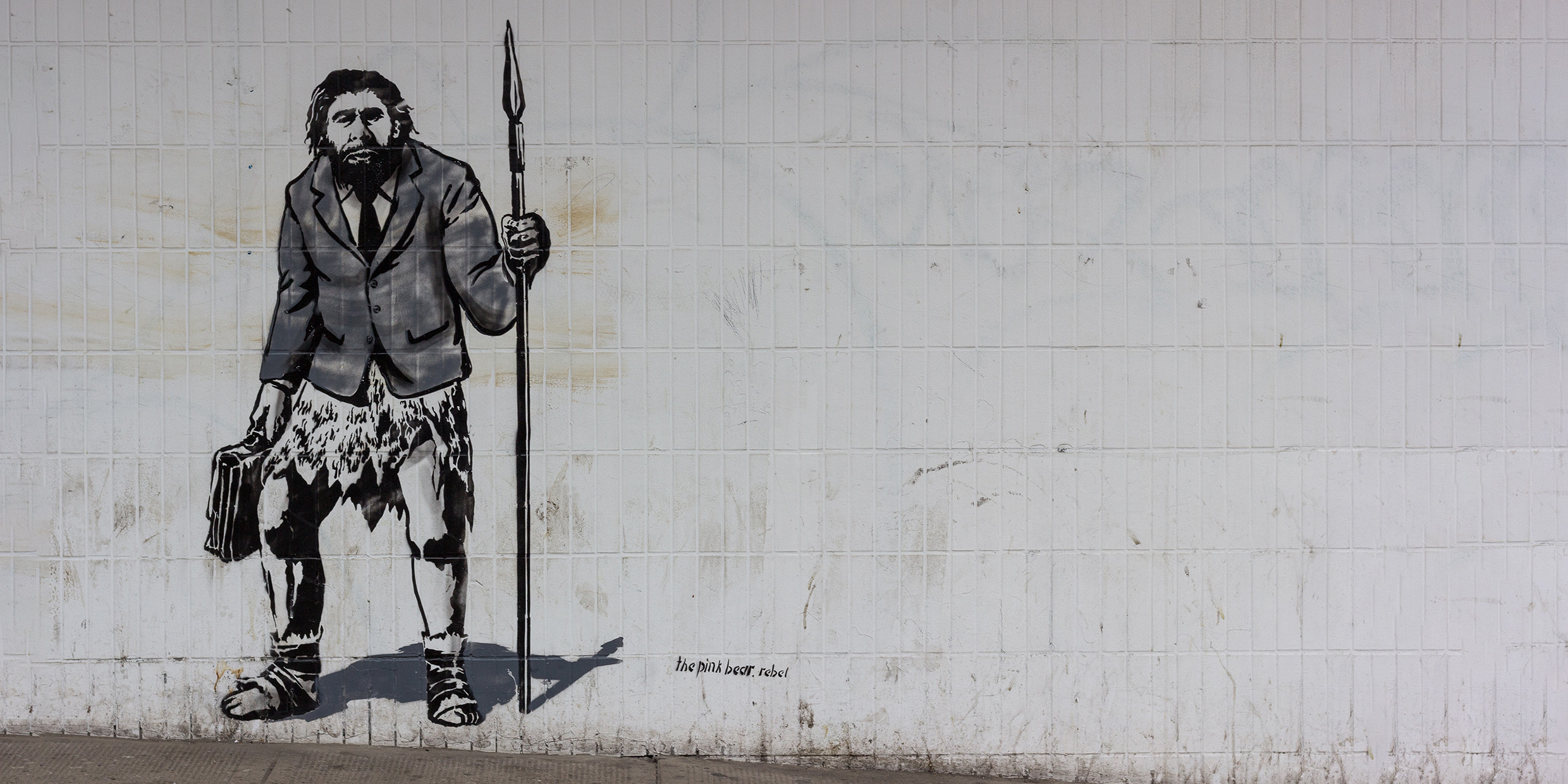Originally published 7 March 1988
Pity the poor Neanderthals, who had the misfortune to be discovered at about the time Darwin was evoking the outrage of his contemporaries by suggesting that humans, apes, and gorillas have a common ancestry.
The fossilized bones of Neanderthals were first excavated and studied in the middle of the 19th century. The bones were undeniably human, but distinctly different than those of modern men and women. The stocky limbs and heavy, slanted brows suggested a gorilla-like ancestor that no one warmly welcomed to the human family tree.
Until recently, Neanderthals were considered dull-witted, brutish aberrations of evolution, blessedly rendered extinct about 35,000 years ago by the rise of anatomically modern humans.
In his widely-read book, The Outline of History, published in 1920, H.G. Wells promoted the view that a dim racial remembrance of the Neanderthals may survive in our folklore stories of ogres. He assumed that the first modern humans did not interbreed with Neanderthals, and attributed this separateness to the Neanderthal’s “extreme hairiness,” his “ugliness,” and “repulsive strangeness.” In a short story Wells referred to Neanderthals as “the grisly folk.”
In this Wellsian version of prehistory, which for a long time was shared by scientists, the triumph of modern humans over the Neanderthals was the triumph of reason, imagination, and lofty moral vision over ugliness, stupidity, and amorality.
The novelist William Golding, best known as author of Lord of the Flies, was one of the first to suspect that our brutish image of the Neanderthals was actually a transference to another species of darker characteristics that we found within ourselves.
In his 1955 novel, The Inheritors, Golding turned the story of the Neanderthals and Cro-Magnons on its head. Golding’s Neanderthals live in a state of childlike innocence, possessed of wonder and imagination. They do not willfully kill other animals. They are sexually restrained, and charmingly uninhibited about their nakedness.
Enter the Cro-Magnon
Into this Eden-like existence come the violent and cannibalistic Cro-Magnons. The new folk revere a witch doctor with an antlered mask. They are adulterous and engage in orgies. The gentle Neanderthals are no match against the craftiness and cunning of the new arrivals. Except for a single child, Golding’s happy band of Neanderthals are eliminated. The tougher, more adventuresome Cro-Magnons inherit the earth.
Golding’s revisionist story had its parallel in science, for in recent decades anthropologists have also been taking a fresh look at the fossil evidence. It is now conceded that the Neanderthals were a creative, imaginative people that greatly extended the regions of the world occupied by humans. They practiced highly-developed skills for making tools, clothing, and shelter, cared for the aged and handicapped, and buried their dead, sometimes including masses of flowers in the burial. It now appears that Neanderthals were not so “grisly” after all.
These thoughts about our changing views of the Neanderthals are inspired by a report in the Feb. 18 [1988] issue of Nature, by a team of French and Israeli scientists led by Hélène Valladas. The group used a new dating technique called thermoluminescence to determine the age of burnt flints associated with a group of human skeletons found in Israel. The skeletons are anatomically modern and nearly 100,000 years old.
The finding makes it difficult to believe that modern humans evolved from Neanderthals. Apparently the two subspecies of humankind are almost equally ancient, and shared the planet without interbreeding for at least 50,000 years.
A host of questions remain to be answered. What was the relationship between the two human populations? Did they compete for resources? And what were the features that enabled modern humans to survive and become “the inheritors” even as the Neanderthals faded away? Was it mental capacity, language, and inventiveness that gave Cro-Magnons the advantage? Or was it aggressiveness, rapacity, and a shrewd instinct for self-advantage?
Technologies for killing
And finally, the older, darker question is raised again: Were our Cro-Magnon ancestors implicated in the final disappearance of the Neanderthals?
Many paleontologists believe that the expansive rise of modern humans, armed with new technologies of killing, was the cause of the mass animal extinctions that occurred near the end of the last ice age, when mammoths, mastodons, saber-toothed cats, and a host of other creatures vanished from the Earth. Could it be that the Neanderthals — a parallel branch of the human family tree — were also victims of the inheritors? If so, then perhaps William Golding was right and the “grisly folk” are really a carefully suppressed aspect of ourselves.



